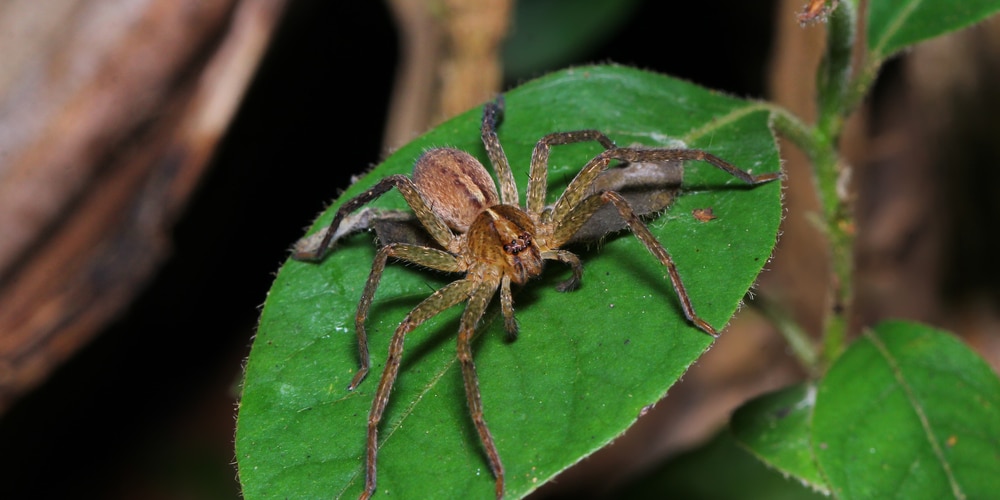The huntsman spider, as intimidating as they may look, is actually quite shy. Native to Australia, these spiders can be found in tropical and temperate regions worldwide. If you’ve seen one scurrying along your walls or ceiling, you’re not alone – they are known for their speed. And while they may be fast, they are also quite adept at camouflage, making them difficult to spot.
Whether you’re interested in these spiders for their hunting abilities or impressive speed, there’s no denying they are fascinating creatures. But what do huntsman spiders eat? Read on to find out!
Huntsman Spiders: Brief Description

In the US, the huntsman spider is also referred to as the brown huntsman spider due to the brown coloration of its legs and body. These spiders can range in size from one to five inches, with females being larger than males. They are characterized by their long legs and large, flat bodies.
They are usually brown or gray in color, with mottled markings that help them to blend in with their surroundings. These spiders are fast and agile, making them skilled hunters.
These spiders get their name from their hunting style, which is more active than that of other spiders. Most huntsman spiders do not build webs to catch their prey; instead, they stalk and ambush their victims. They are nocturnal predators, and they take this chance to hunt their prey.
Their Natural Habitat
Huntsman spiders are found in tropical and temperate regions all over the world. They are most commonly found in Australia, where they are native, but can also be found in Africa, Asia, and some parts of the United States.
They prefer dry habitats such as forests, woodlands, and deserts. However, they can also be found in urban areas, where they often enter homes searching for food or shelter.
Inside your home, you’ll typically find them hiding in dark, secluded places like closets, behind or under your furniture, or in the basement.
What Do Huntsman Spiders Eat?
While the specific diet of huntsman spiders varies by species, these spiders generally prefer to eat insects and other small arthropods. Sometimes, these spiders may also hunt and feed on cockroaches, lizards, and small mammals.
Some species of huntsman spider will even eat other smaller spiders. It’s a natural cycle – these spiders help to keep the population of smaller insects and arthropods in check.
They have strong jaws and venomous fangs that they use to kill their prey. They use their chelicerae, or fangs, to pierce the exoskeleton of their prey and inject them with venom. This venom paralyzes the victim and liquefies their internal organs, making it easier for the spider to consume them.
While they typically hunt alone, some species of huntsman spider will work together to take down larger prey. These spiders are known to be cannibalistic and will sometimes eat each other – especially if food is scarce.
Are They Dangerous?
It’s true that huntsman spiders are dangerous for insects and other small arthropods. However, they are generally not considered to be a threat to humans. Their venom is not strong enough to cause serious harm to humans, and bites from these spiders are rare. In fact, they’re reluctant to bite humans unless they feel threatened.
While huntsman spider venom is not typically deadly to humans, it can cause painful swelling and inflammation at the site of the bite. In some cases, huntsman spider bites may also cause nausea, vomiting, and headaches.
In rare cases, more severe reactions may occur, such as difficulty breathing or an increased heart rate. If you are bitten by a huntsman spider and have noticed any of these symptoms, it is important to seek medical attention immediately.
What to Do if You Find a Huntsman Spider in Your Home
Like with any common house spider, the huntsman spider inside your home can be beneficial to have around. If you have them inside your home, there’s no need to panic and just let them be.
However, if you’ve noticed that they’re staying in areas where you or your family members frequently stay, such as the living room or bedroom, you can carefully capture them and release them outside. You may use a small newspaper to guide the spider into a cup and then release them into your garden or a nearby park.
